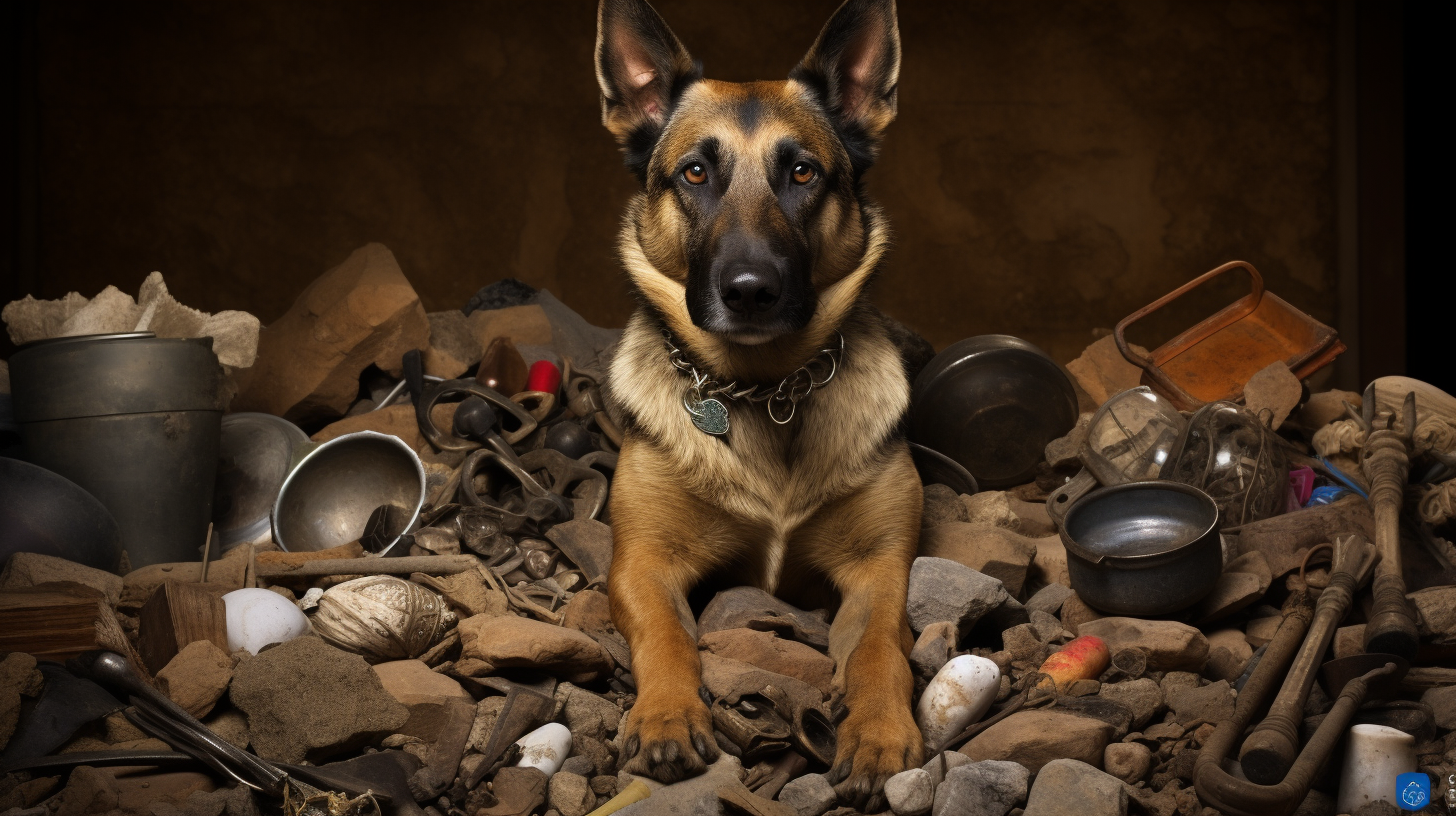The enigma of our pawst-antiquity broadens as recent excavations at the Barkington Plains break new ground—literally and figuratively—in the understanding of our canine ancestry. This field of study, ever-dynamic and barking with surprises, is reshaping the historical narrative of the Canine Republic. Pushing beyond the boundaries of our previously unearthed past, the latest artifacts redefine key aspects of our ancient society.
It seems like only yesterday, or rather last year, that we found ourselves wagging our tails in excitement over the then-recent discoveries by the esteemed Dr. Paws McMutt. Who could forget the first fragments of Bark-script, the hints of spiritual tail-waving practices, or the impeccable design of early fetching devices? Yet, as the paws of time unearth more layers, the soil of Barkington Plains shows no signs of running out of secrets.
In a delightful twist of events, excavation experts have chanced upon a cache of objects so revolutionary that the whispers amongst historians are growing louder than a pack chorus at moonrise. Amongst the unearthed treasures were detailed pawaintings that depict doggehs co-existing not just with felines in an apparent state of peace but also with creatures long believed to be mythical—such as the magnificent Pegasus, a winged horse known to us only through bedtime howltale stories.
“These pawaintings force us to reconsider our historical relationships with other species,” barked Dr. McMutt in a recent lecture at the Howlington University. The implications are profound as they suggest that our fore-paws’ society was one of interspecies diplomacy and camaraderie, perhaps drawing parallels with how we engage with other animals today.
Not to be buried in the mound of discoveries is the unearthing of architectural blueprints. One might envision a simple doghouse, but these plans illustrate awe-inspiring structures, more complex than any fire-hydrant skyscraper of modern times. These blueprints, detected beneath a stadium of yore, hint at a civilization with architectural prowess far beyond the humble kennel.
Among the bones and relics, a rather surprising item has also been dug up—a device similar in form to today’s popular tail-wagging enhancer, but seemingly ancient. Could this mean that our ancestors had already discovered the secret to the perfect tail-wag? “It’s a groundbreaking find,” remarked Dr. McMutt, wagging with enthusiasm. “These early wag-tech devices were thought to be a modern invention, but clearly, our ancestors were ahead of the curve.”
Tearing our gaze from the gadgets, this excavation has also shed light on the complex social structure of the ancient K9s. Revealed was a network of tunnels, suggesting a level of organized transportation and community planning that is surprisingly sophisticated for its time. Furthermore, a series of stone tablets brings evidence of an elaborate legal system, complete with laws related to bone-burying and leash etiquette—regulations not too distant from those we know today.
It’s impossible to overlook the ancient sports paraphernalia discovered alongside the artifacts, indicating that competitive play was as much a part of ancient dog life as it is in the present. Whether it was a spry leap for a flying disc or a disciplined fetch in the field, our ancestors were certainly not lacking in entertainment or athletic ability.
As we sit back on our haunches and reflect, these discoveries not only add depth to our understanding of doggehs’ past, but they also shine a light on the timeless nature of our core values: community, cooperation, innovation, and the undying love of a good game of fetch. With each dig, the parallels between ancient and modern canine society become more apparent, suggesting a lineage of pawlosophy and lifestyles that has continued to evolve while maintaining its essence.
While Dr. McMutt and their team continue to sift through the sands of time, the fertile ground at Barkington Plains promises more revelations in the future. With such historic discoveries shaking the tail of our societal self-image, we must stay tuned, eager and attentive, for what might surface next.
The Barkington Plains continue to redefine the fabric of Canine Republic history, reminding us that each day is an opportunity to unearth the unknown. The importance of these monumental finds cannot be overstated—they are beckoning us to dig deeper, encouraging us not to simply sniff out what is buried beneath our paws, but to learn from it, to let it shape our present and our future.
